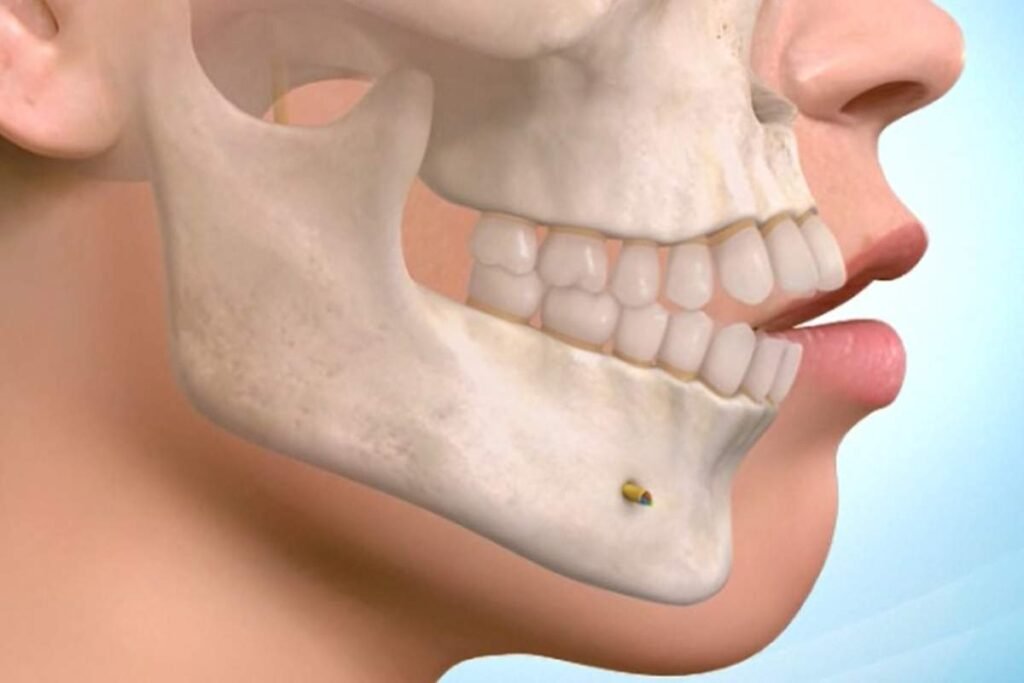Table of Contents
What is Jaw Surgery Orthognathic?

Jaws are important for eating, speaking, and breathing. If they are not aligned neatly, then they can affect these functions. Jaw surgery, also known as orthognathic surgery or corrective jaw surgery, helps in fixing your upper and lower jaw. This correction improves the facial appearance of a person, which in turn improves the quality of their life.
Let’s explore more on this topic further and understand its long-term side effects, benefits, and procedure.
10 Long-Term Side Effects of Jaw Surgery:
Before understanding the surgery procedure, let us understand jaw surgery’s long-term side effects and how it will affect your overall health.
1. Hemorrhage
You will suffer from severe bleeding during surgery, this happens due to various management techniques, such as pressure applications, hemostatic agents, and vessel litigation.
2. Relapse
Post-surgery, if your jaw has shifted backward or forward, it is due to muscle tension, jaw misalignment, or fixation issues.
3. Neurologic Injury
During SSRO, one might suffer from facial paralysis, temporary hypoesthesia, or permanent nerve damage.
4. Infection
Surgeons need to take while performing this surgery. This infection spreads, and one can have long-term side effects.
5. Change is Nasal Structure
Maxillary realignment can change the nasal shape forever, thus the surgeons use alar cinch sutures to reduce these changes.
6. Tooth Injury

After the surgery, the dental roots can get damaged, which may cause the death of the tooth’s inner tissue. It’s important to place screws carefully during this process.
7. Lack of Tears
If the parasympathetic fibers get damaged during this process, the tear production will stop for some time.
8. Middle Ear Infection
One will suffer from infection or fluid infection in the middle ear after the surgery.
9. Vomer Separation
Vomer separation may occur if surgical tools are not used properly by the surgeons during the upper jaw surgery.
10. Psychological Changes
Generally, patients are happy after their facial appearances but may feel less satisfied due to problems with functions such as chewing, breathing, etc.
Benefits of Jaw Surgery Orthognathic
Benefits of Jaw Surgery
After reading the above jaw surgery’s long-term side effects, you might be wondering if this surgery is useful or not. Don’t worry! Jaw surgery orthognathic is not as bad as you think. Here are some benefits of this surgery that you need to know.
Most people take up jaw surgery when they have jaw pains and want to relieve themselves from this pain. If you undergo this surgery, you can enjoy the following.
- Optimal bite function and enjoying the foods that you could not due to misaligned jaws.
- A proper set of teeth will help to better wear and tear because the pressure of the bite will spread across the jaws.
- If your jaws are out of line, you might have speech issues, which will demotivate you. This issue is resolved by the jaw surgery orthognathic.
- Misaligned jaws usually have an impact on facial appearance, the surgery will not only improve your speech capabilities but will also improve your looks!
- This surgery prevents tooth decay and gum disease and helps you brush and floss when your jaws are aligned.
- According to the European Journal of Orthodontics, 85% of patient’s confidence is boosted, has reduced social anxiety, and has improved their quality of life.
The procedure of Jaw Surgery Orthognathic

There are several types of jaw surgery or orthognathic surgeries, but the surgeons follow a similar procedure for all of them.
- Evaluation and Planning: A team of doctors, surgeons, and specialists create a treatment plan that involves X-rays, photographs, and dental impressions to create a treatment plan.
- Preparation: Before the surgery, a patient is asked to wear braces months before for teeth alignment.
- Anesthesia and Incisions: On the day of surgery, patients are given IV anesthesia. Incisions are made in the mouth to reduce the visible scarring.
- Jaw Realignment: The surgeon fixes the upper and lower jaw by using plates and screws inside the mouth.
- Recovery: Once the surgery is done, the patients will have swelling issues, and this will improve within weeks. During this period, patients are asked to have liquid and soft diets and take lots of rest.
Success Story of Olivia Boardman:
Here is a small success story of Olivia Boardman, who was suffering from years of bullying from her misaligned jaws, and how the double chin jaw surgery orthognathic significantly enhanced her confidence.
Olivia Boardman, a 29-year-old woman from Manchester, suffered a lot due to her overbite and was given hurtful nicknames like ‘horse face’. This impacted her physical and mental well-being. She also was suffering from breathing difficulties and sleep apnea. Hence, she decided to take up a double jaw surgery in September, which cost her £25,000, and half of her surgery was covered by insurance. In the six-hour surgery, she went through breaking and repositioning her top and bottom jaw. She also had chin surgery along with this one. After her successful surgery, she has regained her lost confidence and enjoys normal breathing. Her social media followers compare her to actress Kate Beckinsale.
Final Thoughts:
We hope our blog has helped you to understand jaw surgery orthognathic, its benefits, long-term side effects, and the procedure. This surgery plays an important role in correcting misalignments and improves various functions, as discussed in the blog. Through proper planning and skilled execution, jaw surgery can lead to wonderful improvement for the ones who are in need.
Also read: Canker Sore in Tongue: Causes, Symptoms, Treatment, and Prevention









